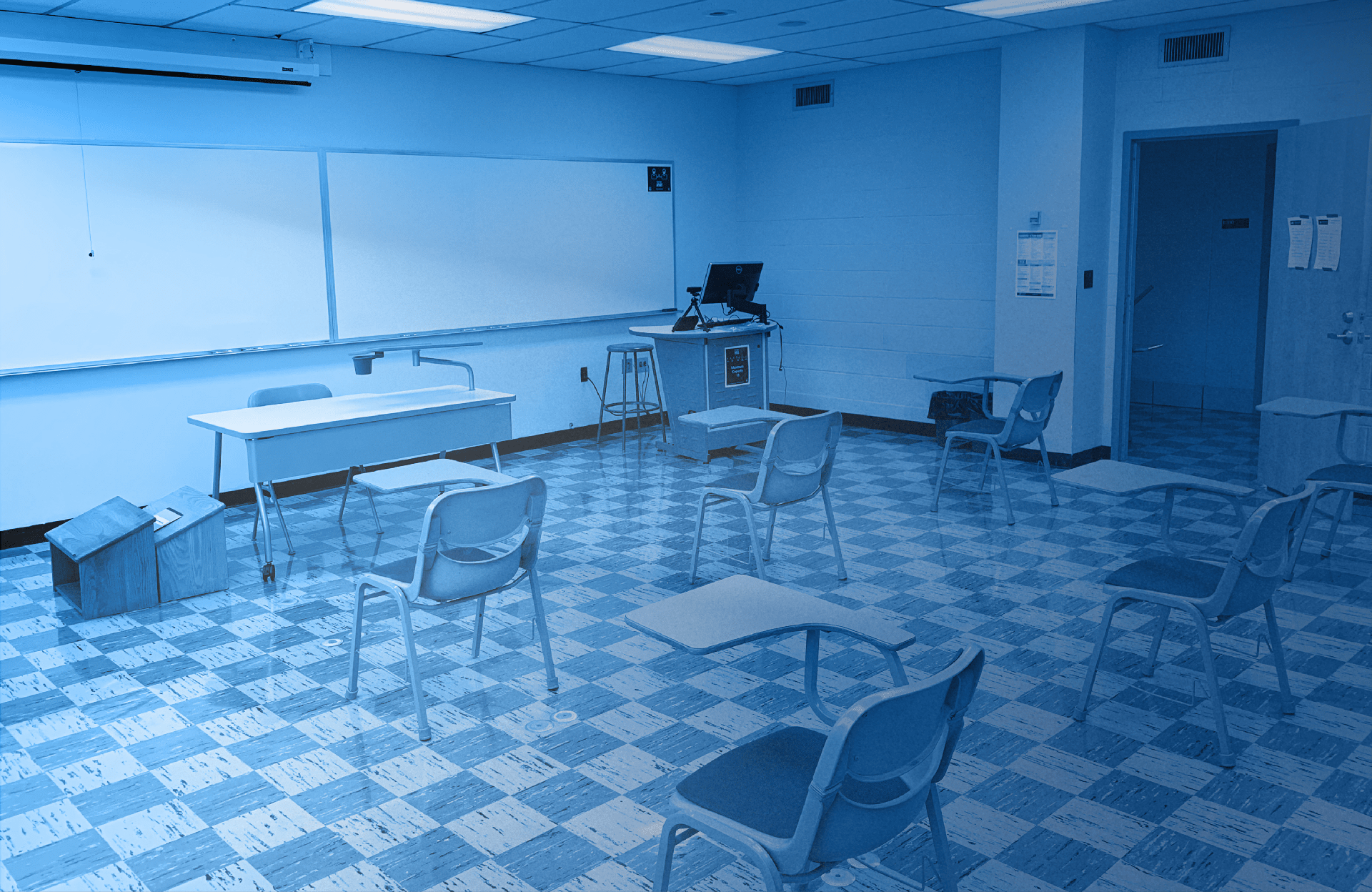As classes evolved from late-spring’s fully remote atmosphere to this fall’s combination of in-person, remote, and hybrid, technology in the classrooms took on even greater importance. Instructors had to be seen and heard in a different way, with the combination of students socially distanced in learning spaces and others joining online.
A classroom technology team was assembled and IT was heavily involved in all aspects of outfitting spaces with the necessary technology, following guidance from the CDC. Leading the team were Terry O’Heron, director of operations for Teaching and Learning with Technology (TLT), and John Hoh, senior IT director for the Commonwealth Campuses. O’Heron said they were charged by Provost Nick Jones with making classrooms Zoom-capable, so they started by figuring out a minimum viable solution to have audio and video in all classrooms.
“We started with three broad categories,” O’Heron said. “One was a webcam. The second was an optional audio component or microphone. The third was a whiteboard substitute, since a camera could not show a whole whiteboard for students connecting remotely. We had to think of an alternative digital format for that. We came up with using iPads or using touchscreen monitors with a stylus to act as digital whiteboards.”
Hoh noted that the audio equipment also needed to work in concert with masks, and they understood not all masks would perform the same in the classroom setting.
Dave Test, manager of Learning Space Technologies with TLT, said he worked with a team led by Keefe Manning, associate dean of the Schreyer Honors College, and Jim Crandall, director of Environmental Health and Safety, to figure out mask guidance. He said they did extensive testing to determine how various devices would affect the ability to be heard in a room.
“Cloth masks worked, but disposable masks were the best,” Test said. “They don’t muffle the voice and make it easiest for others to hear the person speaking.”
Veronica Longenecker, IT director for the College of the Liberal Arts, said speech clarity is especially important in certain situations, such as foreign language classes.
“We needed to ensure classrooms had a microphone that was easy for the faculty to use, and so they could be heard,” she added. “Many classes in Liberal Arts have debates and discussions, so faculty needed to also set up Zoom with breakout rooms so students could hear each other, even if they were in the same room, due to physical distancing.”
Even as they worked on their wish list of technology, they kept in mind that some of their first choices might not be available because of supply chain issues. Test said mics and webcams in particular were in high demand, so they went with the best choices available to have everything on hand by the start of classes.
They also had to be creative when it came to technology for large spaces that were pressed into service for classes, such as Schwab Auditorium and the Bryce Jordan Center.
“One of the more remarkable large spaces at University Park was the drill deck, basically a very large cavernous room in Wagner Building,” Hoh said. “That was a real challenge to figure out how to outfit the technology there.”
Altogether, they had to address 389 general purpose classrooms (GPC) at University Park, 754 campus-controlled spaces, and 163 college-controlled spaces. Test said his team of six full-time staff handled the GPC installations, maintaining physical distancing and wearing masks at all times. They did that work while also handling lifecycle equipment upgrades and disabling some computers in the labs to allow students to physically distance from each other.
“Our team has a vacation blackout period two weeks before the start of classes through the first two weeks of class, so that meant we could really bear down and get things done,” Test said. “It has been a lot of extra stress for the team, but I think everyone is in good spirits.
“My team was furloughed earlier in the summer, because as technical service employees they were not allowed to work from home. Once all the right safety measures were in place to bring them back to campus, they were all anxious to get back and get started on what we needed to do.”

